Configurations for
The Mars Global Surveyor
Space Craft SCIENCE Kit

The assembly instructions and presentation which are included in the MGS Space Craft SCIENCE KIT show you how to assemble your model in any one of several of the spacecraft's flight configurations. Here's what they look like (spacecraft line drawings courtesy NASA/JPL):
Launch Configuration
During launch in November 1996, the spacecraft had its solar panels folded up against the spacecraft bus to be able to fit into the Delta rocket's shroud.
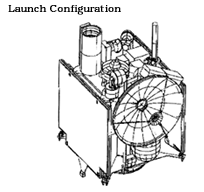
Cruise Configuration
After launch, the spacecraft deployed its solar panels to face the Sun and begin converting sunlight into electrical power to operate the spacecraft. The High-Gain Antenna dish (HGA) is still stowed; the whole spacecraft is rotated to keep the HGA pointing to Earth for communications. This is how the MGS spacecraft is configured today as it coasts along its trajectory to Mars.
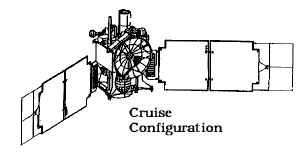
Maneuver Configuration
Once in a while, the MGS spacecraft is commanded to fire its small rocket engine to make fine adjustments to the trajectory that it coasts along. The solar panels are moved to point "downward" in the direction of the main rocket engine, to maintain stability while "G-forces" are felt while the engine burns. This is also the configuration it will take when it gets to Mars and fires its engine again to slow down enough to be captured by Mars's gravity.
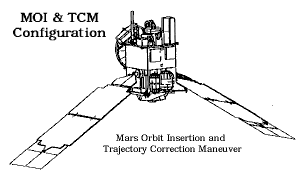
Aerobraking Configuration
After firing its rocket engine for initial Mars Orbit Insertion, the spacecraft will dip into the upper reaches of Mars's atmosphere as it comes close to the planet once on each of its elongated orbits. The atmosphere will impart enough drag on the spacecraft so that it will not climb so high away from the planet. By doing this repeatedly, MGS changes the shape of its orbit from highly elongated to circular. To do this without aerobraking would take far more propellant than MGS carries. During this aerobraking period, the solar panels will be angled "up" like a pigeon's wings, to provide aerodynamic stability. The HGA remains stowed.
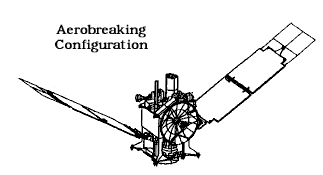
Mars Mapping Configuration
Finally in a circular orbit, the spacecraft deploys its HGA to be able to swivel it and follow the Earth. The solar panels also swivel to track the Sun, while the spacecraft keeps its instruments pointed "down" to the surface of Mars to take images, spectra, and other measurements.
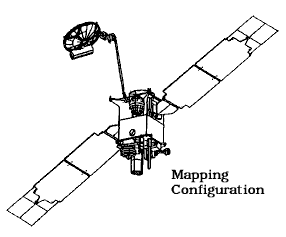

| SCI HOME PAGE
| CATALOG
| HOW TO ORDER
| GREAT SPACE LINKS |




